The New Vividstorm S PRO Electric Tension UST ALR Floor Screen | Full Review
https://www.youtube.com/watch?v=SN3d8L8az4U&feature=youtu.be
Vividstorm is one of the most promising and of course one of the most up-and-coming screen manufacturers in the world. It was founded in 2004 as a designer/manufacturer of high quality tubular motors and projection fibers in the beautiful city of Huizhoo in the southwest corner of China.
Over the years, the company has established a dedicated department for the development, design and manufacture of projection screens with the slogan “For your dream picture”.
In this article we test and present to you our impressions of a special model of electric folding floor screen specific for ultra short throw projectors (UST), the S Pro UST ALR electric floor screen, which is the latest model at the moment and in my opinion perhaps the most technologically advanced screen in the world, you will understand why in the next lines…
In recent years there has been an explosion I would say worldwide in the market of home cinema UST (Ultra Short Throw) projectors and their sales constantly moving upward.
But what does this category of projectors offer and why is it starting to become so popular?
UST projectors can give us a big 4K picture (80-150 inches) from a distance of just a few centimeters. That means that even in small spaces where there is not the necessary room size to set up a normal projector we can still setup our big screen with an UST projector without a lot of mess, large cables and any kind of hassles.
Also the close distance projection means very good behavior in ambient lighting, so by definition the image of an UST projector will encounter fewer difficulties in ambient lighting than a normal throw ratio projector. This means that an UST projector can be used even with some lighting in the room without large retreats in image quality.
If we also put into the equation the evolution of Laser technology that now gives us 20,000-30,000 hours of trouble-free operation (practically we are talking about over 15 years of durability) and this technology almost all new UST projectors use, then we can explain why the UST projection is gaining more and more fans.
But there is a small disadvantage that arises during UST viewing, and this is no other than the large angle that photons hits the display screen.
Such a large angle drives much of the brightness of our projector to the ceiling and not vertically towards to the viewer position.
This means a very large reflection of light on the ceiling that destroys the entire cinematic feeling , as well as reduced brightness to the viewer.
So if I told you that there’s an electrical display that
– Reduces reflections from ceiling projection by 97%
– Also reduces reflections to the screen from ambient lighting by 97%
– Increases the on/off contrast and giving deep black to the dark shots and multiply the ansi contrast
– It can keep the quality of the image at least 80% in a full bright environment
– It’s never going to make the slightest roll and its surface will always be perfectly smooth.
Would you believe me? no?Trust me…you will…
Ladies and gentlemen, I present you the Vividstorm S Pro Electric Tension UST ALR Floor Screen, the latest version of the Vididstorm UST ALR screen, or just “the magic screen”…
The fiber technology of this screen is amazing. Its surface consists of thousands of horizontal streaks with a gradient of about 60 degrees, so they direct the light they received at a wide angle from an ultra short throw projector direct vertically to the viewing position.
At the same time, the slope of these streaks and their color on their upper surface which is black (and as we know black absorbs and does not reflect light) prevent the reflection of light from other sources , leaving the image unaffected.
In vividstorm’s case, the company talks about rejecting lighting environments close to 97%.
The fiber has a gain of 0.6 but that doesn’t necessarily mean that a percentage of brightness will be lost as on classic screens.
The reason is that an UST projector because of the large angle it already loses a respectable amount of brightness anyway, so Vividstorm by driving all the light of the projection towards to the viewer even with gain 0.6 gives a brighter image than a classic white screen or a white wall.
So in theory 0.6 gain will reflect back only the 60% of the light, but in a white wall with an UST projector we loose more than 40% light already, so the actual picture looks brighter on the Vividstorm.
Vividstorm is produced in the following dimensions
Let’s start with an ambient light rejection test. The result is almost insane…
That’s how a UST projector sends the light to the screen…
This how Vivdstorm returns this light to the viewing position…
And that’s the result of the reflection on our ceiling and the ambient light rejection…
Just incredible…
The incredible things don’t stop here..
The construction of the screen does not allow the fiber to make even the slightest wave, and this is because its manufacturers designed a VERY intelligent stretch system of the screen, and I am not talking about the well-known tension.
The two arms at the back that lift the screen when it reaches the desired height that we have adjusted stay almost still while the roll makes a small movement and pulls back the fiber achieving the perfect stretch. As an idea it’s simple, as an implementation it is working just perfect. Such a stretch cannot be achieved by any electric roof screen because it does not have the frame with the arms behind the sail.
This Vividstorm opening system ensures that in the long run there will be no problem with the flat surface of the fiber because it is actually stretched from both sides, and from below, but also from above. It’s like two people opening a fiber roll and at the end one pulling on one side and the other on the other, is there any chance that fiber will loosen? None, unlike on the electric roof/wall screen the pressure only exerts the weight of the lower bar when our screen is open. And I haven’t even put in the equation the classic tension system that Vividstorm has.
Let’s talk about on/off and ansi contrast
For the record, I took measurements on both of them against a white wall
On/off contrast 2680:1 on the white wall, 3260:1 on Vividstorm
Ansi contrast 55:1 on the white wall, 190:1 in Vividstorm, we are talking about almost four times more, and I am talking about measurement on the screen, which is what we see exactly.
To understand what 190:1 of ansi contrast means, a normal projector gives about 300:1 in its lens, before the light even falls on the screen, the most projectors perform on the screen about ~50:1. So 190:1 on the screen is an unreal measurement..
The following is a black from a DLP projector, are you serious?? Take a look the difference from the TV panel shown on the back which is off!
Another example of how Vividstorm’s Ambient Light Rejection (ALR) behaves….
This is the picture looking at the screen from a high angle…
Next experiment, horizontal reflections. The screen does great job in vertical reflections, but how does it behave in horizontal? And there Vividstorm does its miracle again and while its viewing angles are excellent, once the angle grows quite suddenly it stops every incoming or outgoing light. That means there is no escape of light to the side walls, nor is it affected by the side lighting.
Check out the photos to understand exactly what I mean.
From this angle Vividstorm starting slowly to reject light…
But look what happens once the angle becomes bigger…
What you just saw is the reason that by projecting vividstorm even day with all the lights on, the image is minimally affected.
Of course this behavior means that you don’t need much dark space to see an excellent image, since secondary reflections are minimal. To put it simply, the white wall next to the screen or the white ceiling above it does not accept reflected lighting so we can get the coveted cinematic feeling and best contrast picture even in an all-white living room. If you’re looking for the perfect combination for viewing in a classic light colored living room, this is an UST projector and a Vividstorm UST ALR screen.
My tests were done in a full white living room…
With a normal white screen we have a bright space usually when we project. Not with Vividstorm, the light goes straight to the viewer and the space around the screen stays intact as if there isn’t a huge 100-inch screen in the middle that projects a bright image.
Another advantage of Vividstorm is that it completely eliminates the known phenomenon of light unevenness in a UST projector. In UST projection because the projector is too close to the screen the following phenomenon occurs.
The image is very bright at the bottom and as we go up to the top it starts to lose some of its brightness. This phenomenon has the very logical and simple explanation of the different angles projected by the projector at the bottom of the screen relative to the top. At the bottom of the image the angle of light is relatively small so much of it returns to the viewer, while at the top the angle has grown with enough light to be reflected to the ceiling and not to the viewing position.
Vividstrom due to the streaks technology described above forces all the light of the frame at any height of the image to be directed perpendicular to the viewer. This gives us an image that is evenly lit along its entire length and width. In other words, the second disadvantage of the UST projection is eliminated too.
Maybe it’s impossible to describe in words what my eyes saw, that’s why I made a short video to help you get an idea…
Enjoy responsibly…

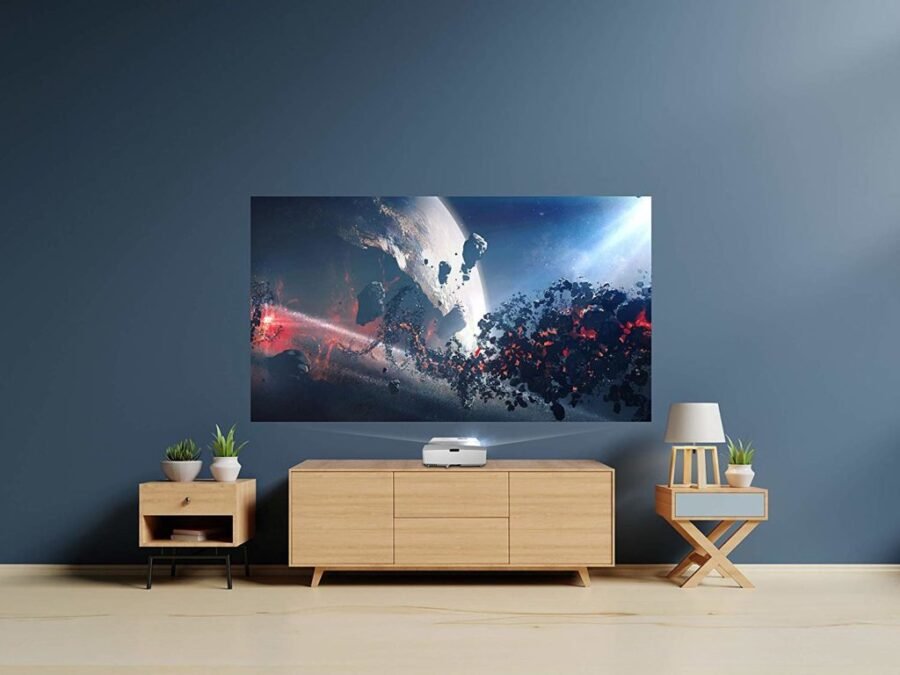


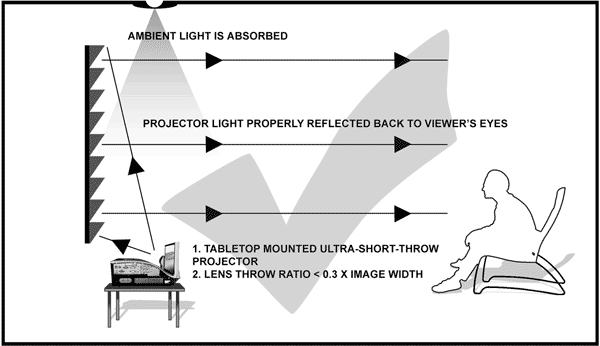
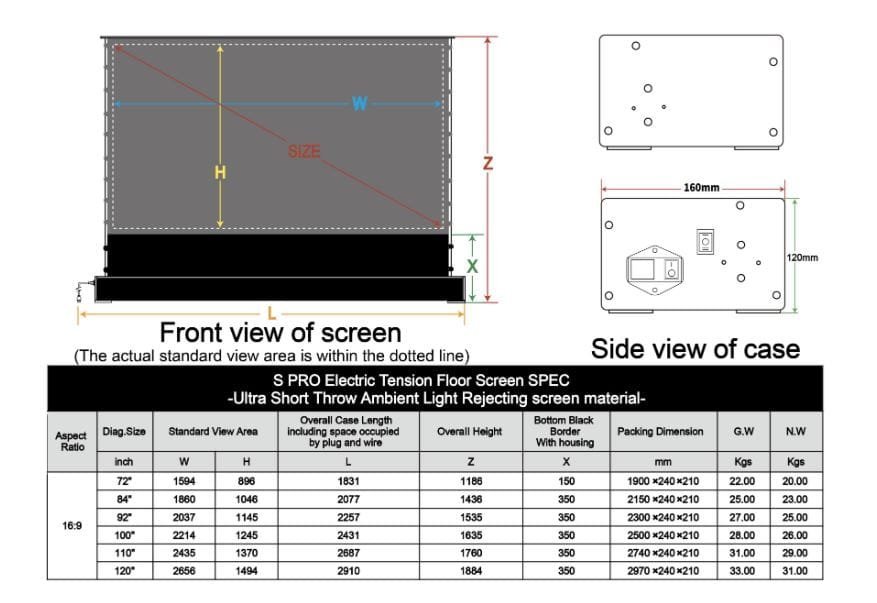


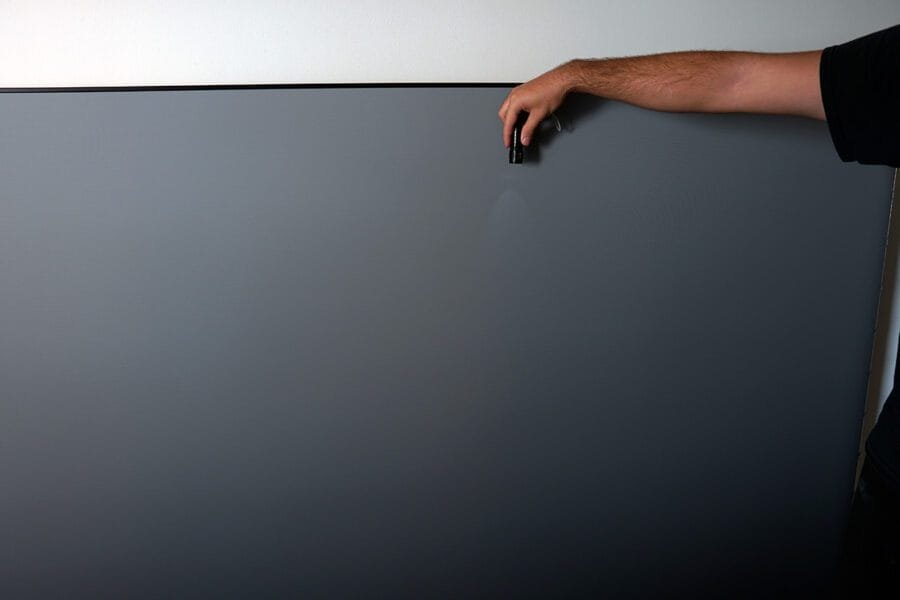
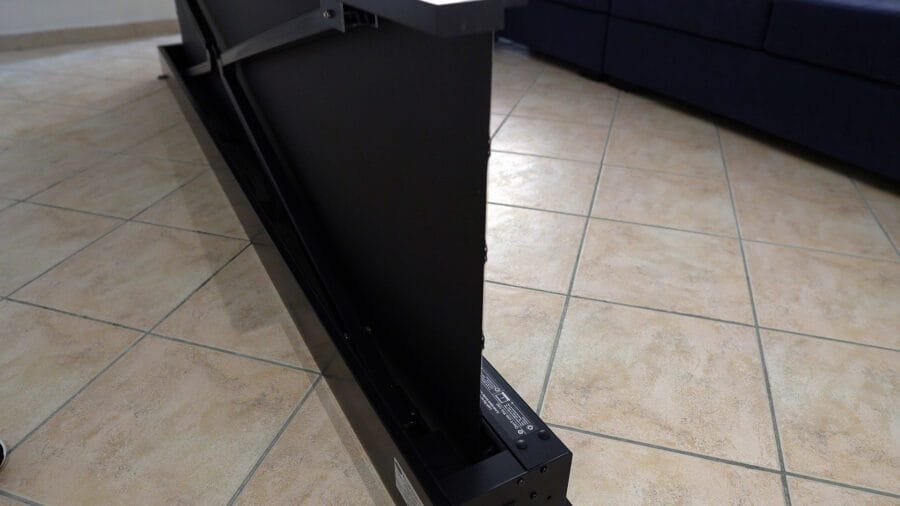

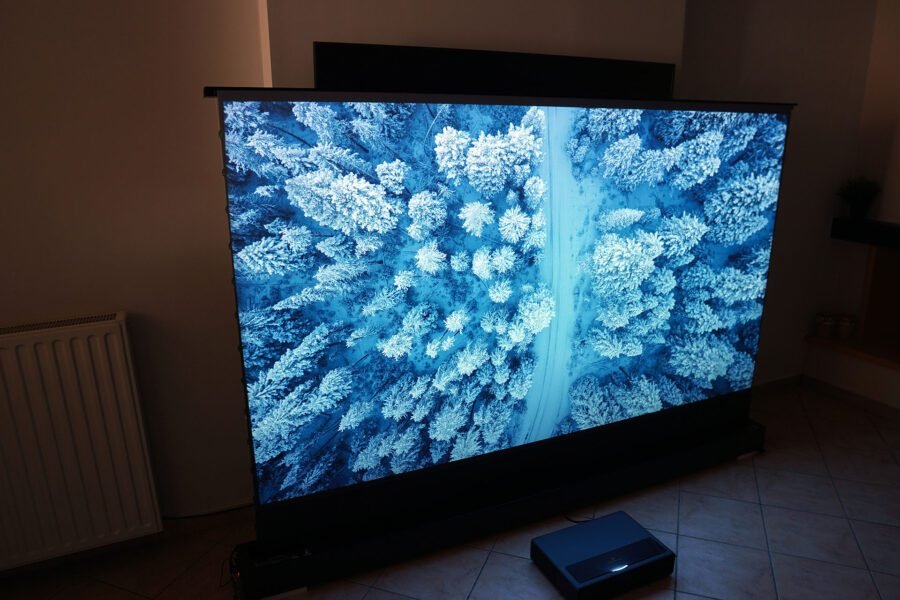
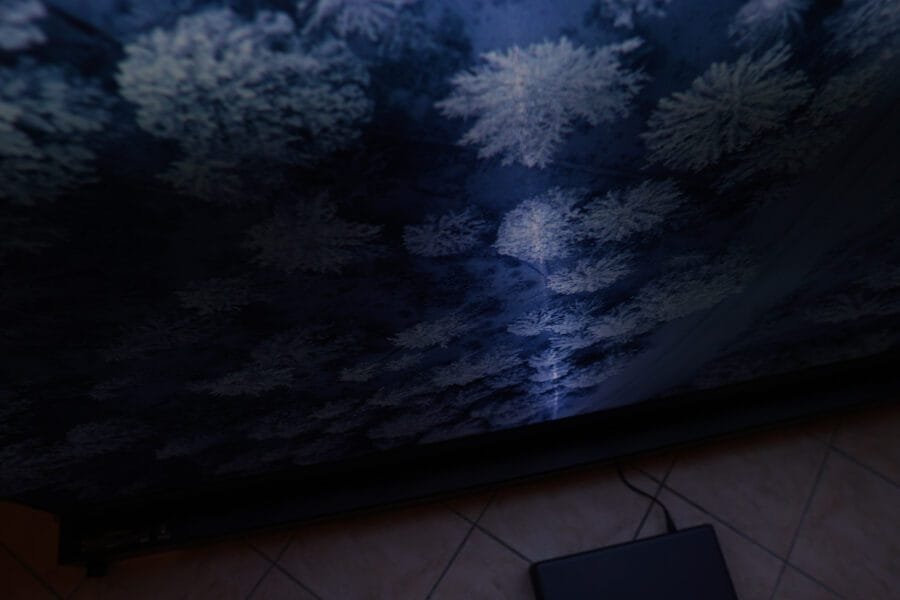
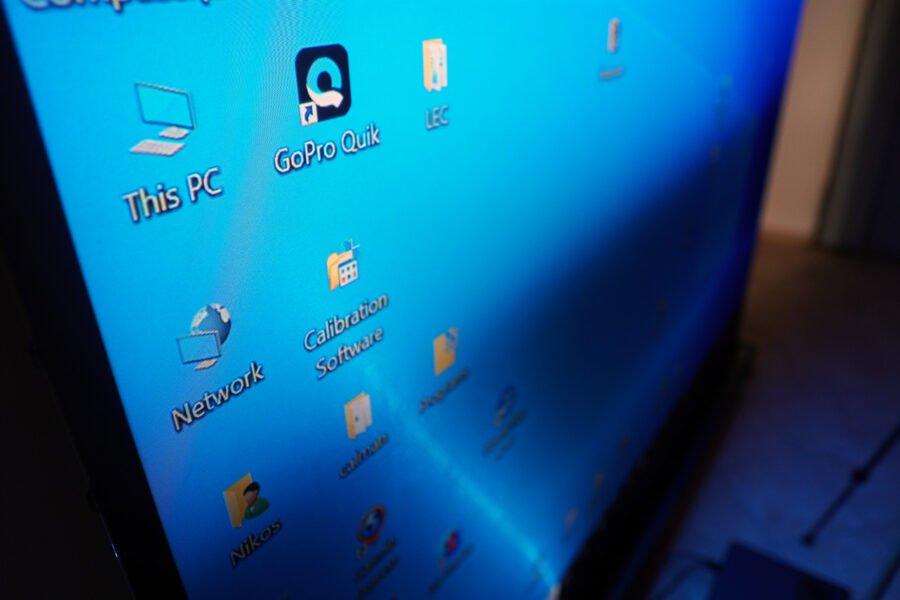
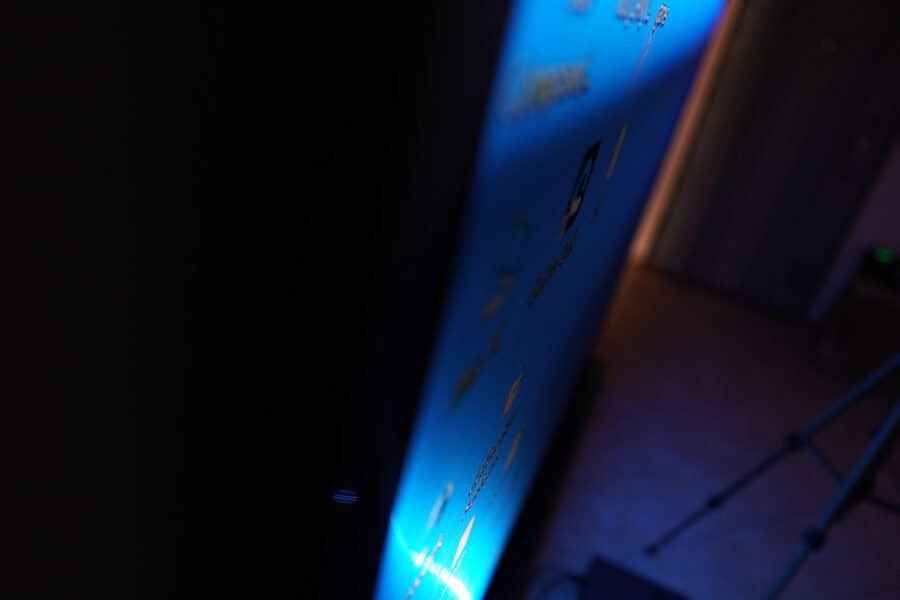
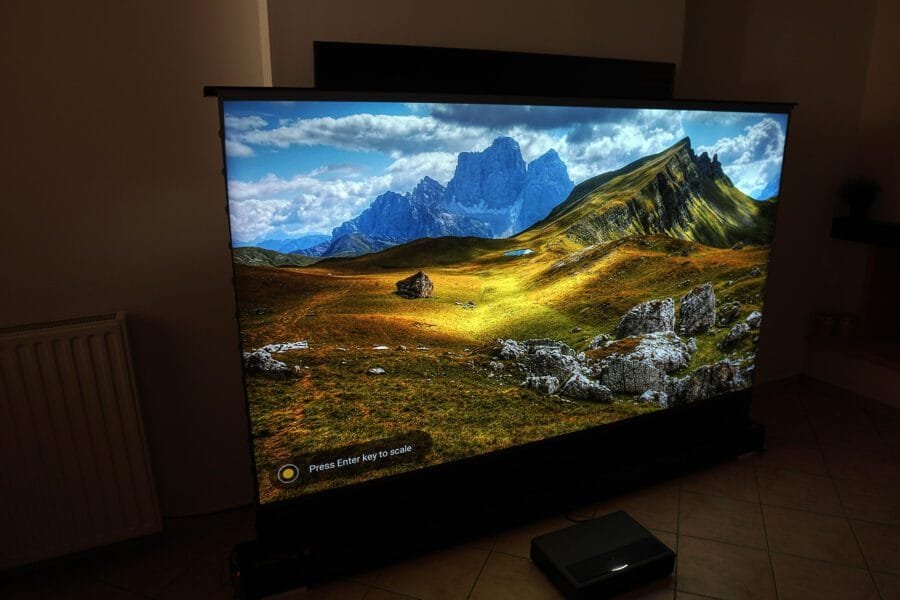

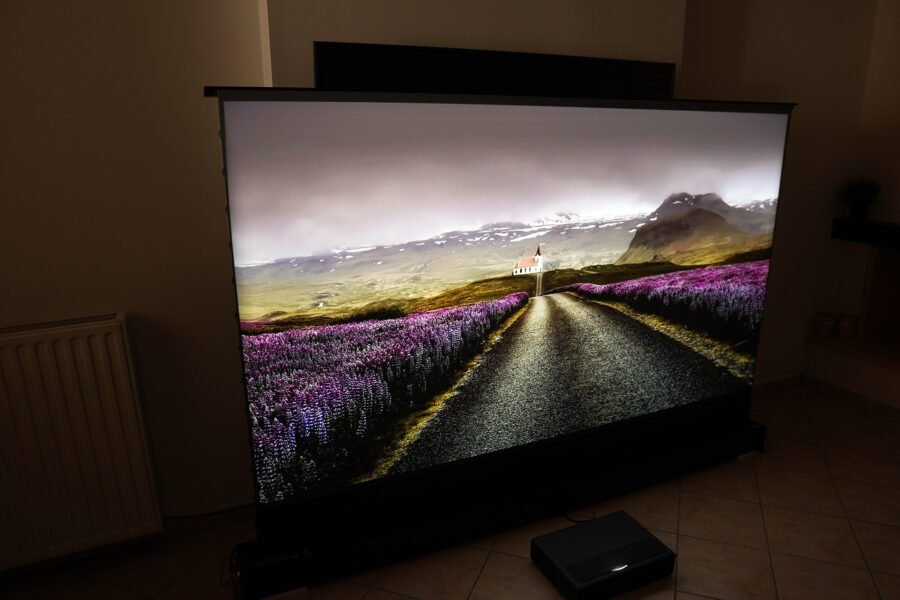
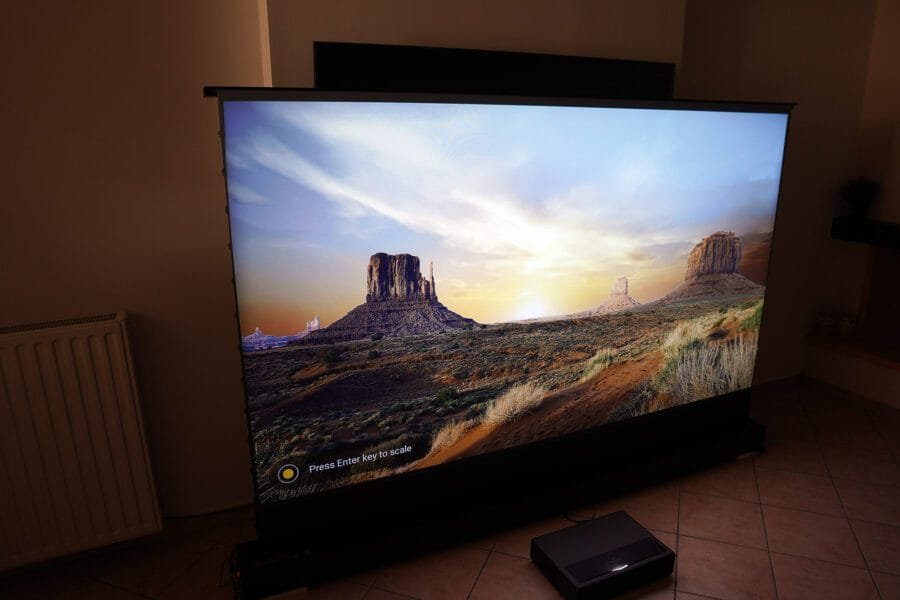
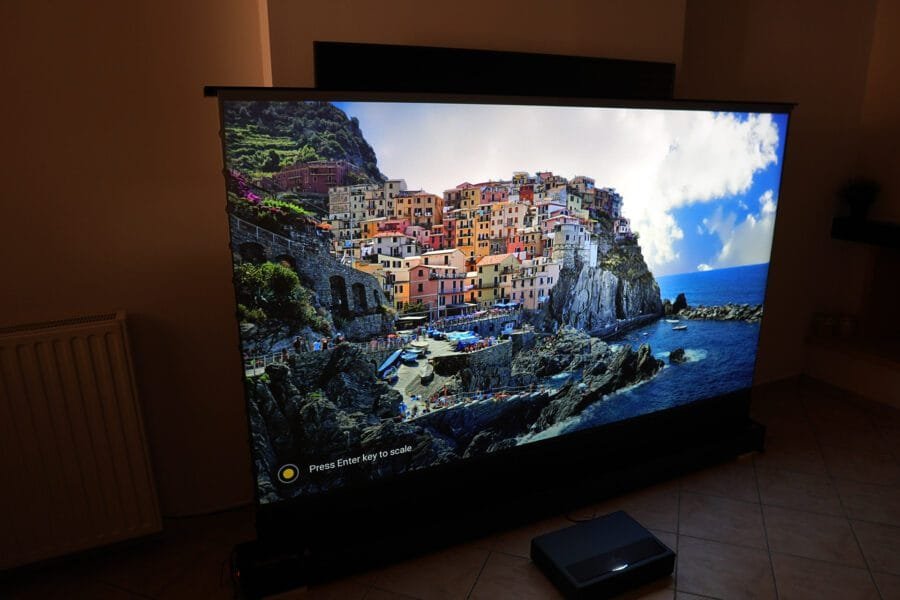


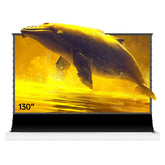
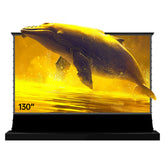
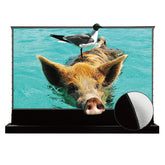
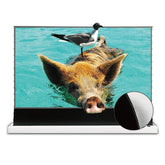
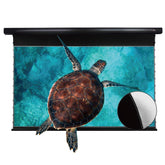
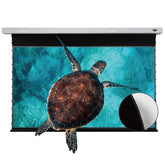
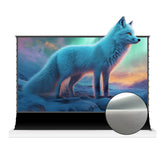
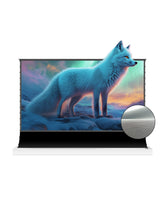
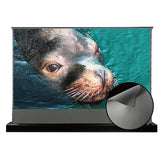
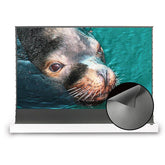
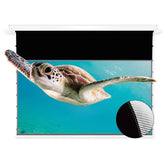
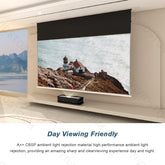
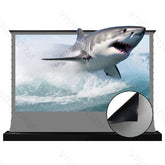
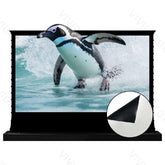
Leave a comment
Please note, comments need to be approved before they are published.